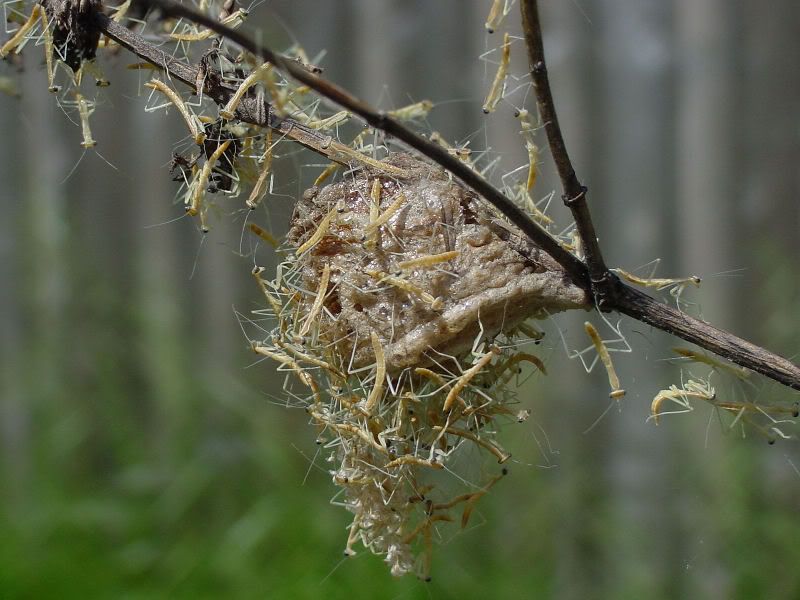Remember my lovely little strawberry patch from last spring?
Well, over the last couple weeks we've been excited to watch some of the plants blossom and begin to produce fruit! But a few days ago, I noticed little aphids starting to thrive on our much-anticipated bounty. See those little white specks?
I thought I might just go buy one of those insecticides you can use for organic gardening, but truthfully, I'd rather not eat whatever would be killing the bugs. So I decided to try the friendly bug approach, and bought these little guys from the plant nursery up the road.
The directions on the ladybugs container said to moisten the area, then spread the bugs around after sunset, as they move more slowly at that time. So last night, we gave it a try, spreading most of them through my strawberry patch, and some in other parts of the yard.
When I went out this morning, they'd made themselves perfectly at home.
The box said that with ample food and moisture, they could begin reproducing right away. They wasted no time.
The ladybugs will feed and lay eggs (in clusters of 10-50) for many days before leaving, then the new generation will repeat the cycle. They are aggressive in both adult and larvae stage (the young are alligator-shaped and black with orange spots).
Except for at my recent birth, I've can't remember seeing a praying mantis on the property, but it's a great bug to have around the garden. They are strictly carnivorous and will go after just about anything, including black widow spiders (of which we have no shortage), and hopefully not including ladybugs, which I didn't think about in my moment of excitement at the nursery. Just in case, I placed them at the far side of the yard (as insurance, I do have a Ladybug Land, but I didn't have time to send for the eggs and do it myself).
The mantis box held two egg cases with 50-200 eggs each. When they hatch, the young will crawl from between tiny flaps in the case and hang from silken threads just below the case. After drying out, they disperse into the vegetation, leaving little evidence of their appearance. It all happens in an hour or two and the egg case does not change in appearance. Wish I could set a camera up to capture their exit, but thanks to google images, I know it will look something like this:
Isn't that a beautiful thing?















What a lovely post, Nonie! I'm so excited to get our garden going this year. These are great ideas for pest help.
ReplyDeleteThat is so cool! I hope the ladybugs and mantises protect your strawberries very well!
ReplyDeleteCan't wait to hear how it works!
ReplyDeleteI've been trying to decide if I should bring in some ladybugs to get rid of the aphids that were all over our plum tree. I hope it works!
ReplyDelete